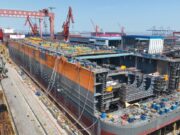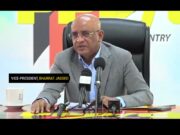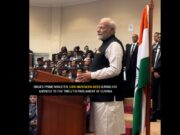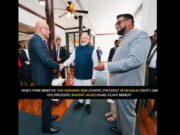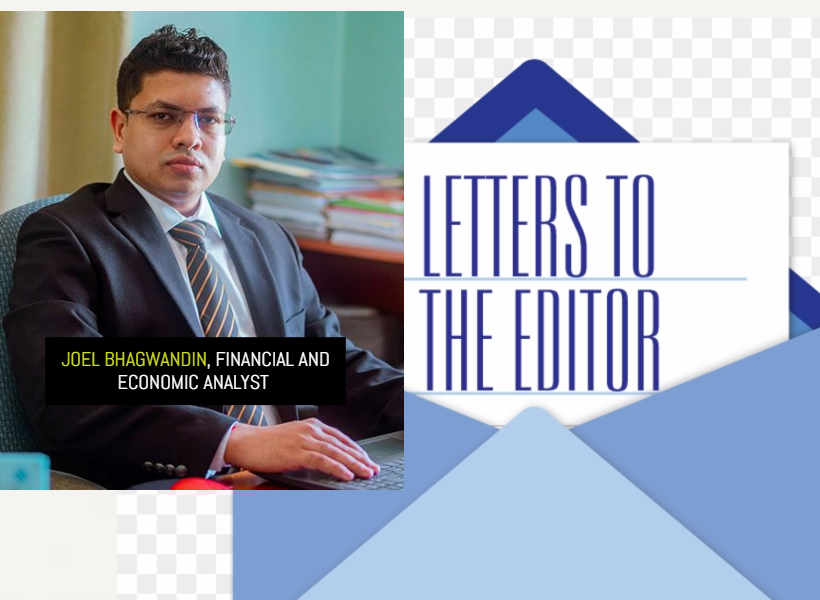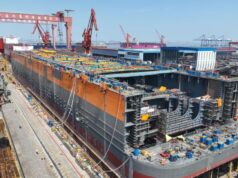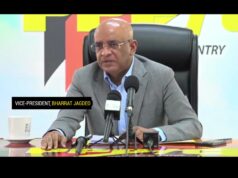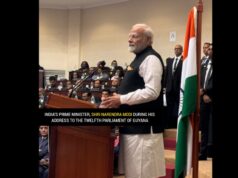Dear Editor,
I have noted that the Opposition Leader’s (OL) Economic Advisor, Elson Low and Kaieteur News Publisher, Glenn Lall have totally misrepresented―and more so misunderstood a statement the Vice President, Dr. Bharrat Jagdeo made at his last press conference. The Vice President was responding to a question posed by Glenn Lall’s reporter on ring-fencing. Then, Elson Low reacted by stating in the media that the Vice President should prove ring-fencing will hamper future revenues and that some study should be done in that regard. Now, if Elson Low was a real economist, he would not have made such a statement, because he would understand what the Vice President means in view of the “time value of money” for example, and he would know that there is no need for a study. Instead what is needed is a proper economic and financial analysis. As the economic advisor to the OL, this is the type of work he should be doing, and not only to advise the OL, but to inform the entire nation of their alternative policies, together with the potential implications of same.
Editor, the concept of ring fencing in the oil and gas fiscal framework has often been misunderstood and misrepresented. To date, none of the so-called experts have utilized their expertise to demonstrate by way of analysis the impact of ring fencing versus the absence of ring fencing, specifically in relation to the Stabroek Block projects. In this regard, the absence of ring fencing in the Stabroek Block is actually an incentive for the Stabroek Block investors, designed to sustain the rapid pace of development of the projects―that is, to extract as early as possible, the proven reserves to date. This is the case especially since it allows for the financing of future projects from the operating cash flows, which is a cheaper source of financing than raising capital on the financial markets, inter alia, debt and equity instruments.
Discussion and analysis of the Stabroek Block Project Economics Model
The Stabroek Block comprised an area of an estimated 26,806 km2 (10.848 million hectares/26.806 million acres) offshore Guyana. The proven reserves to date after almost 24 years of ongoing exploration activities since 1999 is an estimated 11 billion/bbls. The Production Development Area (PDA) comprising all of the discoveries so far accounts for 841 km 2 or 3.13% of the total area size of the Stabroek Block. These reserves are developed in phases through different projects such as Liza-1, Liza-2, Payara, Yellowtail and Whiptail etc. The operator, ExxonMobil Guyana is aiming to have a total of ten (10) Floating Production Storage and Offloading (FPSOs) vessels by 2030. Two FPSOs are currently producing at a rate of over 300,000/bbls/day, the third is expected by the end of 2023, the fourth is expected in 2024, and the fifth is expected to commence production in 2025, bringing the total daily production to over 800,000 bbls/day. By 2030, the total daily production is estimated to be in the region of 1.2 MMbbls/day.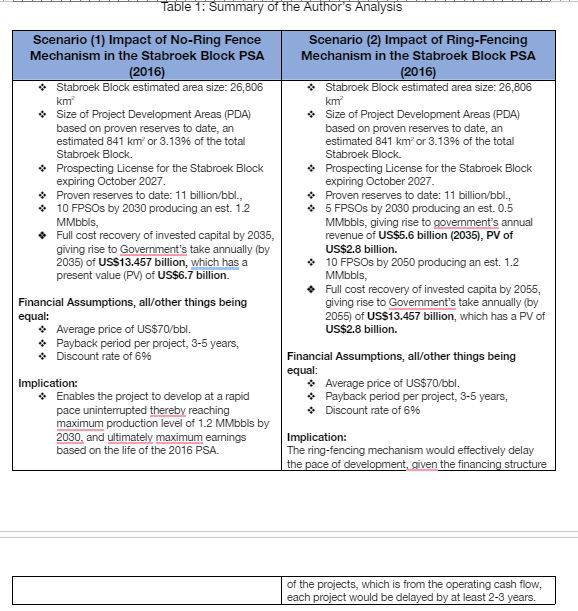
The analysis shown in scenario (1) in the table attached is based on the actual situation whereby there is no ring-fencing provision in the Stabroek Block. In this scenario, the absence of the ring-fencing provision simply means that revenues that can be earned in the short term, is foregone to be earned later in the future, and not necessarily an absolute loss of revenue. Notwithstanding, the critical point to note is how far into the future that actually matters because this is what will determine the impact in terms of the extent to which there is likely to be a loss of value as opposed to the loss of actual revenue provided that all other things being equal. With this in mind, it is important to understand what the trade-offs and other considerations are, and whether the current policy of the government will in fact result in the maximum benefit for the country. As such, the discussions that follow hereunder seeks to address these concerns.
In the first scenario as demonstrated above, the actual situation is considered. The analysis shows that at the current pace of development and all other things being equal, the invested capital will be fully recovered by 2035. Consequently, the government’s take will increase from 14.5% to 45%, giving rise to an annual revenue of approximately $13.457 billion.
However, considering the time value of money, earning US$13.457 billion twelve (12) years from now is worth the same as US$6.7 billion in today’s money (Present Value/PV).
In the second scenario, the implication of ring-fencing in the Stabroek Block is such that the pace at which the development is currently taking place will be delayed by at least two-three years between each project. In other words, owing to the effect on the free cash flow available to the oil companies to the extent where it would be significantly reduced, the pace of future developments will be hindered. As a consequence, rather than having ten-FPSOs producing 1.2MMbbls by 2030, the other five FPSOs will take another fifteen years to develop into the production stage.
Henceforth, all other things being equal, effectively the ring-fencing provision is highly likely to result in production increasing to 1.2 MMbbls not until 2050 as opposed to 2030, with the invested capital being fully recovered by 2055 instead of 2035, almost 32 years later as opposed to 12 years later in the first [actual situation] scenario. Additionally, in the second scenario, government’s revenue is an estimated US$5.6 billion annually by 2035 with a present value of US$2.8 billion as opposed to US$13.5 billion with a present value of US$6.7 billion in the first scenario. Furthermore, when production peaks at 1.2 MMbbls under the second scenario in 2055 (3 decades from now) the annual revenue of US$13.5 billion [then] will have a present value of US$2.092 billion; effectively translating to a loss of value of US$4.61 billion, when taking into account the time value of money 12-years from now into the future versus 32-years from now into the future.
Conclusion
This analysis proves that the current policy of the government in terms of the Stabroek Block development will derive the maximum benefit for the country after considering all the varying factors and different scenarios above.
Finally, when the Vice President, Dr. Bharrat Jagdeo spoke of the possibility of losing into the future, owing to ring-fencing [with his use of] proverbial terminologies, what he actually meant is exactly what I have demonstrated in the foregoing analysis. Henceforth, it is important that one understands the complexities of the issue, the varying degree of impact under different scenarios, and under which scenario would ultimately derive the maximum benefits for the country within the shortest possible timeframe.
Yours respectfully,
Joel Bhagwandin
